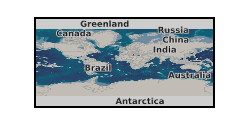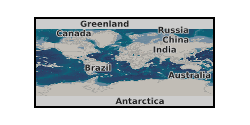Whole rock analysis
Type of resources
Topics
Keywords
Contact for the resource
Provided by
Years
Formats
Update frequencies
-

Major and trace element data for plagioclase and whole-rocks from Japan sampled and filtered from the GEOROC online database (http://georoc.mpch-mainz.gwdg.de/georoc, state: 1 January 2017). The data was used to test the recently developed plagioclase porphyry indictor mineral, as described in Williamson et al. (2016, Nature Geoscience, 9: 237-241), on samples from Japan. Japan is considered a negative control as it has no known porphyry deposits, despite showing favourable geology. The data was used in Williamson B.J., Hodgkinson M., Imai A., Takahashi R., Armstrong R.N., Herrington, R.J., 2018. Testing the Plagioclase Discriminator on the GEOROC Database to Identify Porphyry-Fertile Magmatic Systems in Japan, Resource Geology, 68: 138-143.
-

Whole rock assay data for the El Teniente, Skouries and Muratdere porphyry Cu deposits. Samples were selected for analysis from boreholes in the Muratdere Cu-Au-Mo porphyry deposit, Western Turkey; and the Skouries Cu-Au porphyry deposit, Greece; and samples from the El Teniente Cu-Mo porphyry deposit were selected from the Natural History Museum London’s ore collection. This data contains whole rock assay data performed by ALS, comprising the whole rock concentration of metals and semi-metals from the three deposits. This data was collected as part of the TeaSe consortium NERC grant in order to determine the concentration and hosting of critical and precious metals in various types of ore deposits and barren rocks from different geological environments.
-

Major and trace element data for partial melts derived from high pressure-temperature experiments on a basaltic starting composition from the Ontong Java Oceanic Plateau.
-

Geochemical data has been collected on samples from new exposures of the 1883 deposits, revealed by the 2018 tsunamigenic flank collapse of Anak Krakatau, which provides improved stratigraphic context. Whole-rock data taken by X-ray Florescence shows no systematic stratigraphic correlation. Chemical data for transects across, and spot points on, plagioclase phenocrysts, including some trace element data, all obtained using Electron Probe Microanalysis (EPMA), with Backscatter electron (BSE) images of crystals, obtained using Scanning Electron Microscope, reveal complex zoning profiles. However, chemical data for transects across pyroxene phenocrysts, obtained using EPMA, show this phenocryst phase is largely unzoned. The dataset also includes chemical data for spots on Fe/Ti oxides, included on the rims of pyroxene, and obtained using EPMA. Matrix glass chemistry, obtained via EPMA, shows that the early eruptive ash is more evolved than the pyroclastic material that follows, and that there is a slight overall trend to a more homogenous, less evolved melt composition. The 1883 eruption of Krakatau was a large, cardera-forming eruption that caused approximately 36,000 fatalities. It is also the only eruption of its size to have accompanying written accounts.
 NERC Data Catalogue Service
NERC Data Catalogue Service